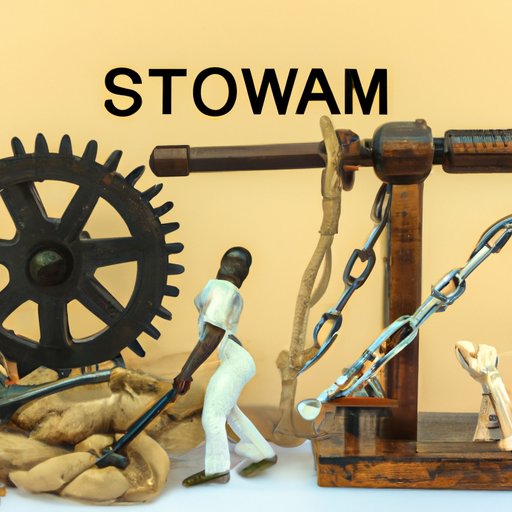Introduction
Slavery is an age-old practice that has existed in various forms throughout history. It is defined as “the status or condition of a person over whom another person has dominion,” meaning that someone else has the right to control their actions and use them for their own benefit. Although it is often associated with race and racism, this form of oppression is actually much more complex. The history of slavery is one of exploitation and power, and it is important to understand when and how it began in order to fully comprehend its legacy today.
Historical Timeline of Slavery: When Was Slavery Invented?
The exact origin of slavery is unknown, but evidence suggests that it dates back to antiquity. One of the earliest mentions of slavery can be found in the Code of Hammurabi, a set of laws written in ancient Babylon around 1754 BC. This code includes provisions for the treatment of slaves and outlines punishments for those who mistreat them. From here, slavery spread to other parts of the world, including Greece, Rome, India, and China.

The Origins of Slavery: Exploring the Invention of Forced Labor
The origins of slavery are complex and varied. While some cultures developed systems of legal servitude, others relied on conquest and war to capture and enslave people. Throughout history, different types of slavery have emerged, including debt bondage, indentured servitude, and chattel slavery. These systems were used by governments and societies to gain wealth and power, often at the expense of the people they enslaved.
In some cases, slavery was seen as a way to pay off debts or settle disputes. Other times, it was used as a punishment for criminals or those who disobeyed the law. It was also used to acquire labor for projects such as building roads, bridges, and fortifications. In all of these cases, the enslaved individuals had no choice but to accept their fate and work for their captors.
Uncovering the History of Slavery: From Ancient Times to Modern Day
As slavery spread throughout the world, it began to take on different forms and meanings. In the early days of the slave trade, many Europeans saw Africans as inferior and suitable only for manual labor. This led to the colonization of Africa and the mass transportation of millions of people to the Americas, where they were put to work on plantations and farms. This period saw the rise of the triangular trade, which transported slaves, goods, and money between Europe, Africa, and the Americas.
The expansion of slavery in the New World had a devastating effect on African-American communities. Many were separated from their families and denied basic rights, such as the right to education or freedom of movement. This system of oppression continued for centuries, and it wasn’t until the 19th century that abolitionists began to fight for the rights of the enslaved.

Slavery Through the Ages: How and When It Began
Slavery has been practiced in various forms throughout history, beginning in ancient times. Evidence suggests that slavery was already well established in Egypt and Mesopotamia around 2000 BC. This form of servitude was also common in ancient Greece and Rome, and it spread to other parts of the world, including India and China. Slavery reached its peak during the Middle Ages, when it was used to support the feudal system in Europe.
Slavery continued to exist into the modern era, although it was slowly abolished in most countries. In the United States, the Thirteenth Amendment officially abolished slavery in 1865, although it was still practiced in some parts of the world until the late 19th century. Today, slavery still exists in many parts of the world, although it is now illegal in most countries.

A Look at the Invention of Slavery and Its Impact on Global Society
The invention of slavery had a profound and lasting impact on global society. It created a system of oppression and exploitation that continues to shape our world today. Slavery has had a profound effect on culture and society, as well as the economy. It has enabled countries to accumulate wealth and power at the expense of those who are enslaved.
The legacy of slavery has also had an impact on racial dynamics and inequality. People of color have faced discrimination and marginalization due to the long history of exploitation and oppression. The effects of slavery can still be felt in many parts of the world, and it is important to understand and address its legacy in order to create a more equitable society.
Conclusion
Slavery has been a part of human history for centuries, and its legacy continues to shape our world today. While the exact date of its invention is unknown, evidence suggests that it dates back to antiquity. Different types of slavery have existed throughout history, and it has had a profound effect on global society, both economically and culturally. Understanding the history of slavery is essential in order to fully comprehend its legacy and the continuing struggle for justice and equality.
(Note: Is this article not meeting your expectations? Do you have knowledge or insights to share? Unlock new opportunities and expand your reach by joining our authors team. Click Registration to join us and share your expertise with our readers.)
